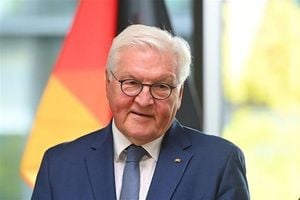In a significant shift, Canadian pension funds are turning their attention towards Europe for investment opportunities, largely influenced by the recent tariffs imposed by U.S. President Donald Trump. These tariffs include a staggering 145% on goods from China and a 10% tax on exports from various countries, including those in Europe and Canada. This move has prompted a reevaluation of investment strategies among major Canadian pension funds, which have traditionally favored American markets.
As the global economic landscape shifts, Aaron Bennett, the investment director at the University Pension Plan (UPP) in Ontario, highlighted an "interesting revival of possibilities" in Europe. UPP manages assets totaling $8.4 billion and is currently analyzing several high-potential investment areas within Europe. Bennett emphasized that his focus is particularly on the private credit sector, describing it as a market that is "less used" by large investors.
"I believe there has been an interesting revival of the range of possibilities and outcomes that could happen in Europe," Bennett remarked, noting the ongoing transition of the European economy from a slow growth rate to a more robust pace. He indicated that certain asset classes, such as infrastructure, real estate, and private credit, are becoming increasingly attractive as a result of this economic evolution.
The Ontario Teachers’ Pension Plan (OTPP), one of Canada's largest pension funds with assets exceeding $266 billion, is also intensifying its interest in European investments. Jo Taylor, the CEO of OTPP, recently stated that the fund is actively pursuing opportunities across all categories of European assets. "I like the idea of being bold and investing in areas where others are reluctant to go because that means less competition and the chance to make better choices at lower prices," Taylor explained.
Currently, OTPP has allocated 33% of its portfolio to the U.S. and 17% to Europe, the Middle East, and Africa (EMEA). As global conditions evolve, there is a clear trend towards balancing these percentages in favor of the EMEA region. This shift is not only a response to the new tariffs but also reflects a broader strategy to diversify and optimize investment returns.
While private credit has a solid history as an asset class, Bennett points out that the accelerated growth of this market—now valued at approximately $1.6 trillion globally—means that certain segments may not have been thoroughly tested over the long term. "There are many segments where a lot of capital is being allocated quickly, but there are also segments where we see fragmentation and interesting opportunities," he noted.
The interest in European investments by Canadian pension funds comes at a time when the European economy is also undergoing significant changes. Countries like Germany are increasing their defense spending and other areas, which could bode well for long-term economic prospects in the region despite the current high level of economic uncertainty.
As these Canadian pension funds explore new avenues for growth, the broader implications of Trump's tariffs and the shifting economic alliances will likely continue to shape their investment strategies. The ongoing trade tensions between the U.S. and China, coupled with the evolving dynamics within Europe, create both challenges and opportunities for investors.
In light of these developments, it remains to be seen how successful Canadian pension funds will be in navigating the complexities of the European market. However, their proactive approach signals a willingness to adapt to changing global economic conditions and seek out new investment avenues.
As the situation develops, the response from other global investors and the potential for further shifts in investment strategies will be closely monitored. The Canadian pension funds' pivot towards Europe is just one example of how financial institutions are responding to the rapidly changing economic landscape influenced by political decisions and trade policies.




